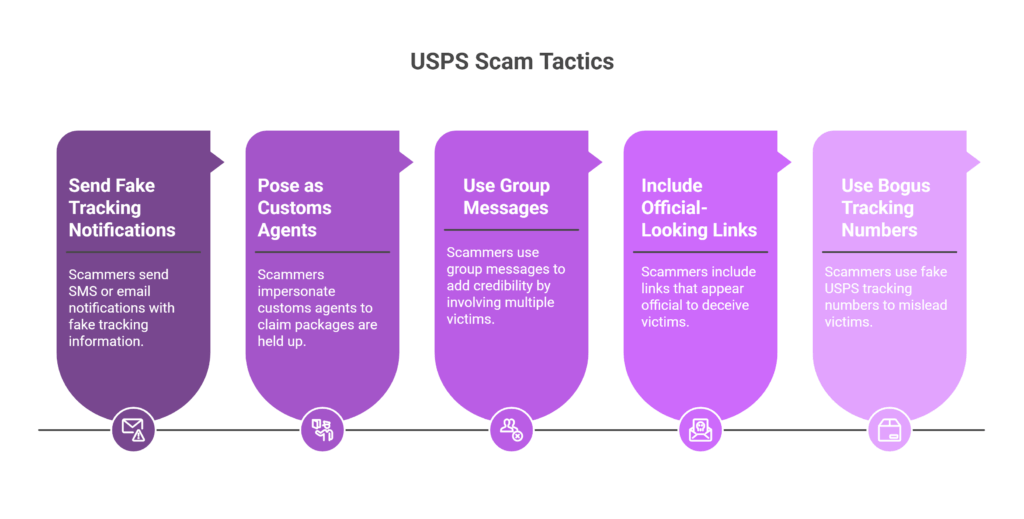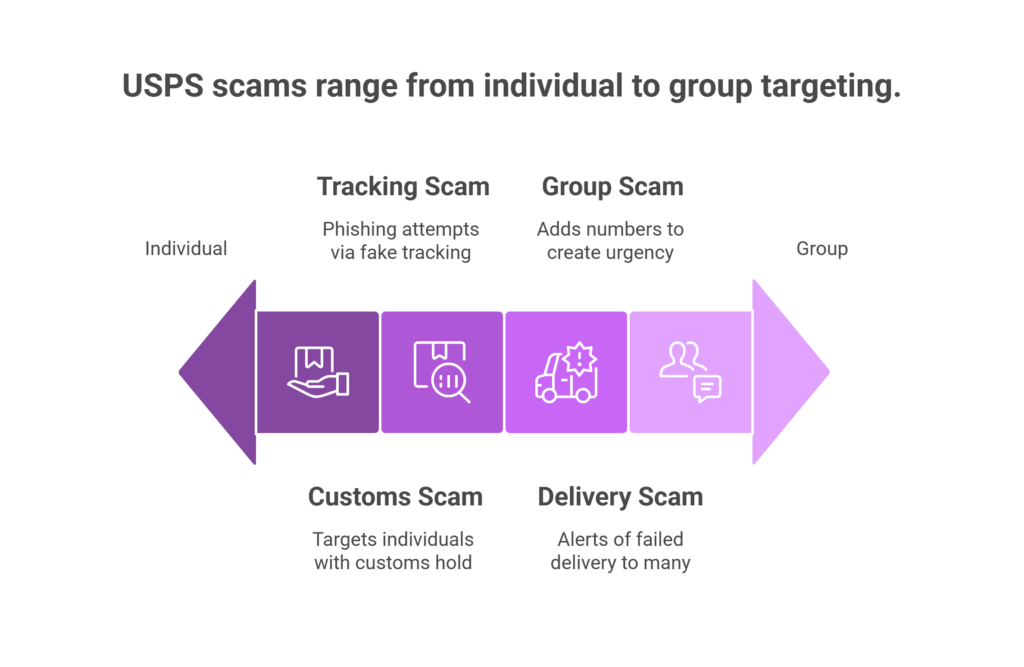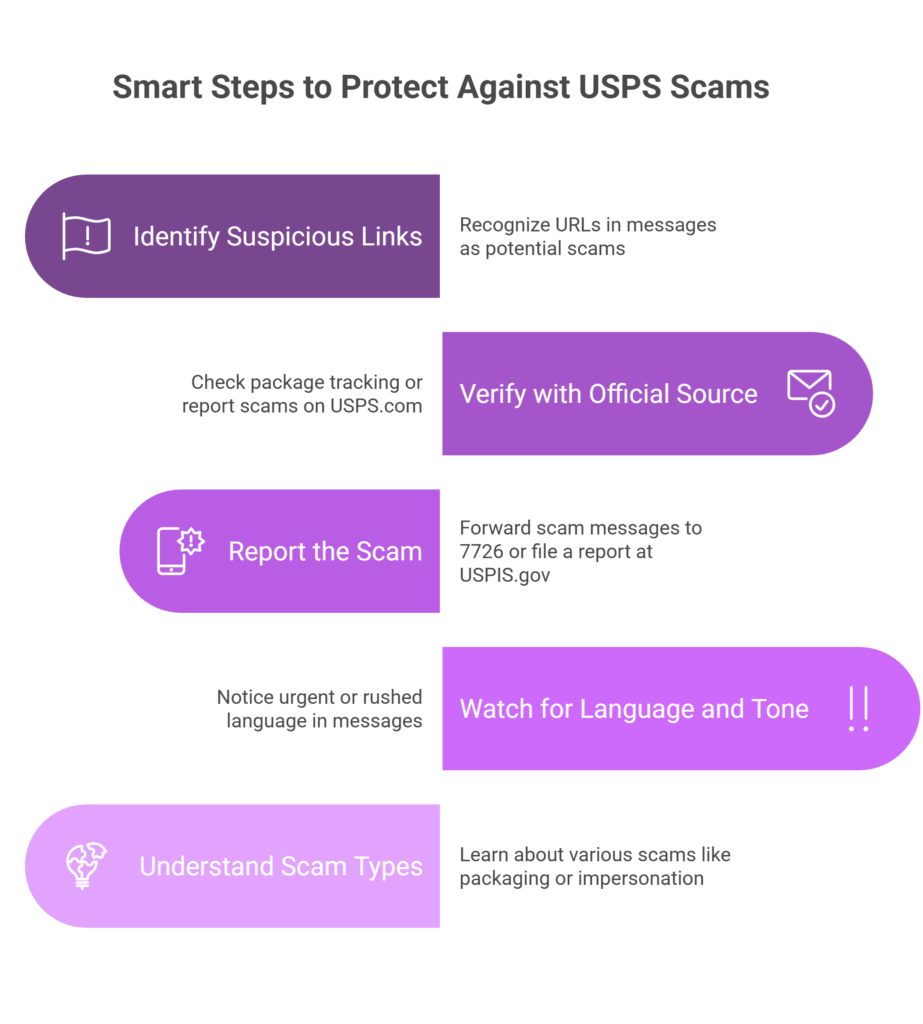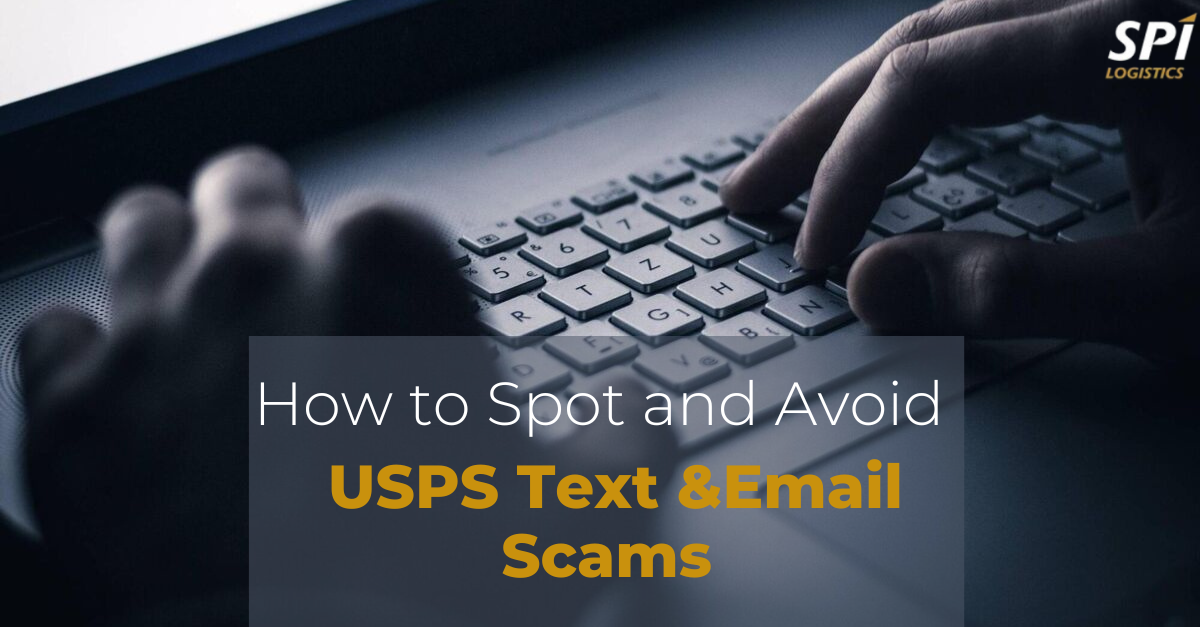Online scams are getting smarter, and fraudsters are now impersonating trusted services like the United States Postal Service (USPS) to trick people into clicking malicious links or giving away sensitive information. Whether it’s a suspicious USPS group chat scam or a random text from USPS US customs, many are left wondering: Is this real or a scam?
If you’ve ever asked yourself things like, “Is there a USPS scam email?” or “Will USPS text you if a package cannot be delivered?” This guide is for you. Let’s break down the most common USPS delivery scam tactics and show you how to protect yourself.
The Rise of USPS-Related Scams
Scammers are using clever tricks to impersonate the USPS. Here’s how they’re doing it:
- Sending fake tracking notifications via SMS or email.
- Posing as customs agents claiming your package is held up.
- Using group messages with several victims to add credibility.
- Including official-looking links and bogus USPS tracking numbers.

In 2023 alone, over 330,000 phishing complaints were filed with the FBI, many linked to fake delivery services, including USPS impersonation (FBI Internet Crime Complaint Center [IC3], 2024). USPS also noted a significant increase in reported scam texts and emails impersonating their services (USPS, 2024).
If you’ve received a USPS text message scam or USPS scam email, you are not alone.
“Scammers rely on the trust consumers place in government agencies like USPS. The more realistic the message looks, the more dangerous it becomes.”
Have you or someone you know received a fake USPS message recently?
Most Common USPS Scam Variants
Here’s how these scams typically appear:
1. “Your parcel is being held by customs”
You may receive a text from USPS US customs asking for a fee or personal information.
Don’t fall for it. If you’re wondering, does USPS text you about customs? The answer is no (USPS, 2024).
2. “Tracking number error”
You might be shown a bogus USPS tracking number with instructions to click a link.
These are almost always phishing attempts tied to a parcel tracking notice scam (Better Business Bureau [BBB], 2024).
3. Group scam texts
Some users report a USPS group chat scam where several phone numbers are added to a group.
This tactic creates a sense of urgency or legitimacy.
4. Fake delivery failure alerts
Messages claiming that your package couldn’t be delivered.
If you’re asking, will USPS text you if a package cannot be delivered? Be cautious. This is not how they typically operate (USPS, 2024).

“Fraudsters are refining their tactics by mimicking tracking messages, customs alerts, and group chats, making detection harder than ever.”
Which of these scam types have you seen or almost fallen for?
What to Do If You Clicked on a USPS Scam Link
If you accidentally clicked on a suspicious link or entered your details, act quickly:
- Disconnect from the internet temporarily to prevent malware installation.
- Run a virus/malware scan on your device using trusted software.
- Change your passwords immediately if you entered login credentials.
- Contact your bank to flag suspicious activity if you share financial information.
- Report the incident to the U.S. Postal Inspection Service and FTC (Federal Trade Commission [FTC], 2024).
“Fast action is the key. The sooner you respond, the lower your risk of identity theft or financial loss.”
What’s the first thing you would do if you realized you clicked on a scam link?
How to Report a USPS Scam Properly
Here are the proper channels to report a scam:
- Forward scam texts to 7726 (SPAM) to alert your mobile carrier.
- Report phishing emails to spam@uspis.gov.
- Visit https://www.uspis.gov/report to file an official complaint.
- For broader consumer protection, report to https://www.ftc.gov.
The more we report, the better USPS and regulators can combat fraud.
“Reporting scams isn’t just about protecting yourself, it helps authorities track patterns and prevent others from falling victim.”
Have you ever reported a scam before? What happened?
How to Tell If It’s a Real USPS Message or a Scam
Use these guidelines to tell the difference:
Red Flags:
- The message says it’s from the USPS delivery team but includes suspicious links.
- You receive a post office scam text asking for a redelivery fee.
- It claims to be a US post scam text regarding unpaid customs fees.
- Includes threatening language like “final notice” or “your package will be returned.”
What USPS Actually Does:
- Rarely sends unsolicited texts, especially not about customs.
- If you’re wondering, does USPS text you about deliveries, packages, or package delivery? only if you have opted in through official USPS services.
- Official USPS texts will never ask for payment or personal details.
“If you didn’t sign up for text alerts directly through USPS, be skeptical. Legitimate tracking messages never ask for payment.”
Ready to protect your logistics chain with trusted partners? Explore our shipping services.
Smart Steps to Protect Yourself
-
Don’t click suspicious links.
Most USPS tracking scam messages contain URLs leading to fake websites. -
Verify with the official source.
Go directly to USPS.com to track packages or report scams. -
Report the scam.
Forward any USPS text scammers messages to 7726 (SPAM) or file a report at USPIS.gov. -
Watch for language and tone.
A United States Postal Service scam message often sounds rushed or urgent. -
Understand the types of scams.
From post office scam messages to packaging scams, scammers are diversifying. Some even pose as the United Postal Service (a common name confusion with USPS).

“Educating your team on these red flags can significantly reduce exposure to phishing attacks.”
Want help managing carrier payments securely? Learn more about our carrier payments platform.
Frequently Asked Questions
1: Is there a USPS scam email going around?
Yes, many phishing scams are sent via email. Always check the sender’s domain and avoid clicking unknown links.
2: Is USPS.com legit?
Yes, USPS.com is the official website. Be wary of look-alike URLs used in USPS scam attempts.
3: Is there a USPS text scam going around?
Absolutely. The USPS delivery scam is one of the most common SMS scams today.
Don’t Let USPS Impersonators Fool You
Whether it’s a post office scam text or a USPS parcel scam, cybercriminals are counting on you to panic and click before you think. But now that you’re equipped with the right info, you’ll be able to identify a US postal service scam before falling victim.
So, will USPS contact you by text? Maybe, but only if you opted in and only from verified numbers. If you’re ever unsure, just ask yourself: Would the real USPS ever request sensitive info this way?
Ready to stay one step ahead of scammers? Contact us to learn how our team can help protect your logistics communications and keep your shipping secure.
References
Better Business Bureau. (2024). Avoid phishing scams disguised as USPS messages. Retrieved from https://www.bbb.org
Federal Trade Commission. (2024). Recognizing and reporting USPS scams. Retrieved from https://www.ftc.gov
FBI Internet Crime Complaint Center (IC3). (2024). Internet crime report highlights rise in phishing and delivery scams. Retrieved from https://www.ic3.gov.
United States Postal Service. (2024). Fraud prevention tips and scam alerts. Retrieved from https://www.usps.com.




